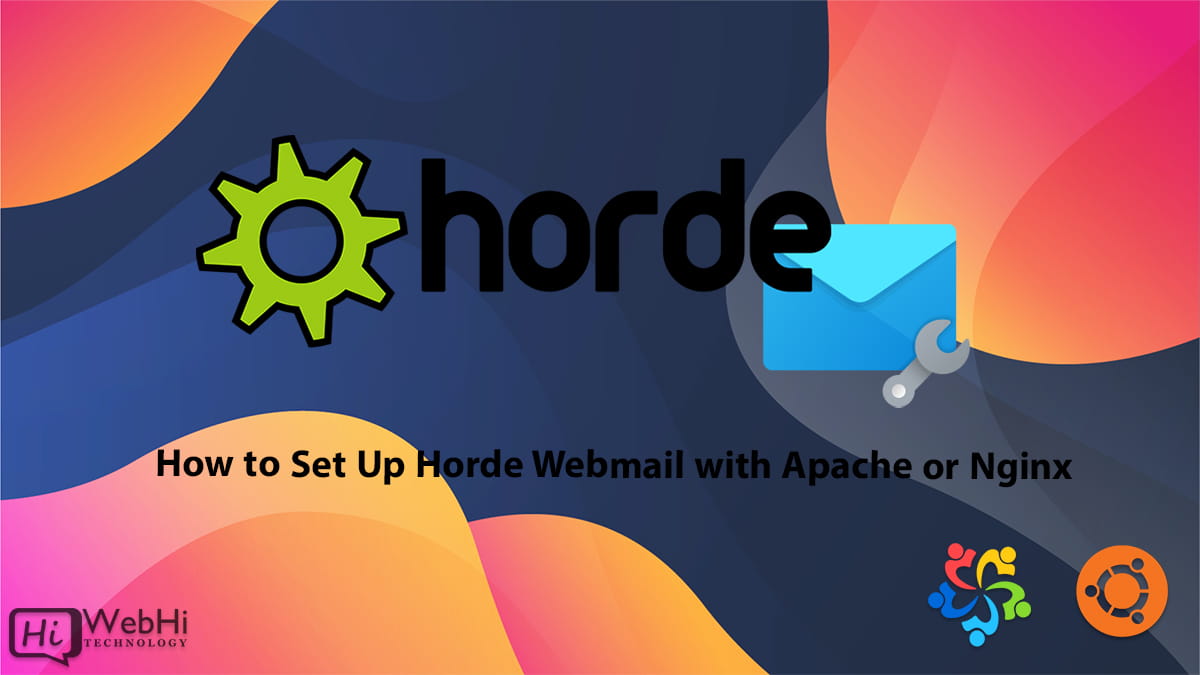
Horde Webmail is a robust, open-source web-based email application used for managing emails, calendars, tasks, and contacts. Installing and configuring Horde with Apache or Nginx allows users to take full advantage of its features in a self-hosted environment. Whether you’re a system administrator or a curious enthusiast, this tutorial will guide you through setting up Horde Webmail step by step.
Introduction
Horde Webmail is designed to handle multiple users, integrate seamlessly with existing email protocols, and provide a user-friendly web interface. This guide assumes a clean Linux server installation (e.g., Ubuntu or CentOS) and walks you through the installation process for Apache and Nginx configurations. By the end, you’ll have a functional Horde Webmail interface running securely on your server.
Prerequisites
Before starting, ensure you have:
- A Linux server (Ubuntu 20.04+ or CentOS 8+) with root access.
- PHP (7.4 or later) and necessary extensions.
- A fully qualified domain name (FQDN) pointing to your server.
- MariaDB/MySQL database for Horde.
- Mail server like Postfix/Dovecot (already configured).
- SSH access to the server.
Installing Required Dependencies
Horde requires PHP, a database, and a web server. We’ll start by installing these components.
Update the System
Ensure your server packages are up-to-date:
$ sudo apt update && sudo apt upgrade -y # Ubuntu/Debian
$ sudo yum update -y # CentOS/RHELStep 1: Install PHP and Extensions
Horde requires several PHP extensions. Install them as follows:
On Ubuntu/Debian
$ sudo apt install php php-cli php-mysql php-imap php-curl php-xml php-mbstring php-pear php-zip php-intl php-gd php-bz2 -yOn CentOS/RHEL
Enable EPEL and Remi repositories for the latest PHP:
$ sudo yum install epel-release -y
$ sudo yum install https://rpms.remirepo.net/enterprise/remi-release-8.rpm -y
$ sudo yum module reset php -y
$ sudo yum module enable php:remi-7.4 -y
$ sudo yum install php php-cli php-mysqlnd php-imap php-curl php-xml php-mbstring php-pear php-zip php-intl php-gd php-bz2 -yCheck PHP version:
$ php -vStep 2: Install and Configure Database
Horde supports MariaDB or MySQL. Use the following steps for MariaDB installation:
Install MariaDB
$ sudo apt install mariadb-server -y # Ubuntu/Debian
$ sudo yum install mariadb-server -y # CentOS/RHELSecure MariaDB Installation
Run the security script to remove default settings:
$ sudo mysql_secure_installationCreate a Database for Horde
Log into MariaDB and create a new database and user:
$ mysql -u root -pInside the MariaDB shell, run:
CREATE DATABASE horde_db;
CREATE USER 'horde_user'@'localhost' IDENTIFIED BY 'secure_password';
GRANT ALL PRIVILEGES ON horde_db.* TO 'horde_user'@'localhost';
FLUSH PRIVILEGES;
EXIT;Step 3: Install Apache or Nginx
Horde can be hosted on either Apache or Nginx. Follow the relevant section for your preferred web server.
Option A: Configure Apache for Horde
Install Apache:
$ sudo apt install apache2 libapache2-mod-php -y # Ubuntu/Debian
$ sudo yum install httpd -y # CentOS/RHELEnable and start Apache:
$ sudo systemctl enable apache2 && sudo systemctl start apache2 # Ubuntu/Debian
$ sudo systemctl enable httpd && sudo systemctl start httpd # CentOS/RHELCreate Apache Virtual Host for Horde
Create a new configuration file:
$ sudo nano /etc/apache2/sites-available/horde.conf # Ubuntu/Debian
$ sudo nano /etc/httpd/conf.d/horde.conf # CentOS/RHELAdd the following configuration:
<VirtualHost *:80>
ServerName webmail.example.com
DocumentRoot /var/www/horde
<Directory /var/www/horde>
AllowOverride All
Require all granted
</Directory>
ErrorLog ${APACHE_LOG_DIR}/horde_error.log
CustomLog ${APACHE_LOG_DIR}/horde_access.log combined
</VirtualHost>Enable the configuration:
$ sudo a2ensite horde.conf # Ubuntu/Debian
$ sudo systemctl reload apache2Option B: Configure Nginx for Horde
Install Nginx:
$ sudo apt install nginx -y # Ubuntu/Debian
$ sudo yum install nginx -y # CentOS/RHELEnable and start Nginx:
$ sudo systemctl enable nginx && sudo systemctl start nginxCreate Nginx Configuration for Horde
Edit the configuration file:
$ sudo nano /etc/nginx/conf.d/horde.confAdd the following content:
server {
listen 80;
server_name webmail.example.com;
root /var/www/horde;
index index.php;
location / {
try_files $uri /index.php;
}
location ~ \.php$ {
include fastcgi_params;
fastcgi_pass unix:/var/run/php/php7.4-fpm.sock; # Adjust PHP version if needed
fastcgi_index index.php;
fastcgi_param SCRIPT_FILENAME $document_root$fastcgi_script_name;
}
}Test and reload Nginx:
$ sudo nginx -t
$ sudo systemctl reload nginxStep 4: Download and Install Horde
Download the Horde Groupware Webmail Edition:
$ cd /var/www
$ sudo git clone https://github.com/horde/horde.git
$ sudo chown -R www-data:www-data /var/www/horde # Apache
$ sudo chown -R nginx:nginx /var/www/horde # NginxSet appropriate permissions:
$ sudo chmod -R 755 /var/www/hordeStep 5: Configure Horde
Access the web installer via http://webmail.example.com. Follow the on-screen instructions:
- Enter the database details you configured earlier.
- Configure the mail server settings (e.g., IMAP, SMTP).
Step 6: Secure Horde with SSL
Install Let’s Encrypt for a free SSL certificate.
Install Certbot
$ sudo apt install certbot python3-certbot-apache -y # Apache
$ sudo apt install certbot python3-certbot-nginx -y # NginxObtain SSL Certificate
$ sudo certbot --apache -d webmail.example.com # Apache
$ sudo certbot --nginx -d webmail.example.com # NginxVerify HTTPS:
Visit https://webmail.example.com.
FAQs
How can I troubleshoot Horde installation issues?
- Check the server logs (
/var/log/apache2/error.logor/var/log/nginx/error.log). - Ensure PHP and database configurations are correct.
Can I use another database type for Horde?
Yes, Horde supports PostgreSQL and SQLite in addition to MySQL/MariaDB.
What mail servers are compatible with Horde?
Horde works with IMAP/SMTP-compatible mail servers like Postfix, Dovecot, and Exim.
How do I reset the Horde admin password?
Access the database and update the admin account directly.
Can I customize the Horde interface?
Yes, Horde allows theme and module customizations.
Conclusion
Setting up Horde Webmail with Apache or Nginx provides a powerful, self-hosted email solution. Following this tutorial ensures a secure and efficient setup. Enjoy managing your emails, contacts, and tasks with the feature-rich Horde platform.
